Organic food and its various aspects are the subject of intense debate. But “going organic” is more than just adopting chemical- and pesticide-free farming practices. It’s a conscious lifestyle change, that has great positive potential for individuals as well as Mother Nature.
If there is one thing that can make almost everyone’s eyes shine and spirits lift up, it is food, glorious food. Food is associated with so many wonderful things in our life – relationships, festivals, togetherness, fun and frolic, and more. But what would we really consider as glorious food today? To urban children, glorious food will most likely be pizzas or burgers or processed stuff of some kind. The kind that Michael Pollan, best-selling author of In Defence of Food, calls “edible food-like substances”.
Most animals will agree that glorious food is fresh food – still almost-alive foods, freshly killed or freshly bitten off from plants.
It’s only certain bacteria, insects, and scavenger birds and animals – which fulfil another part of Nature’s grand plan – that eat dead or non-fresh food.
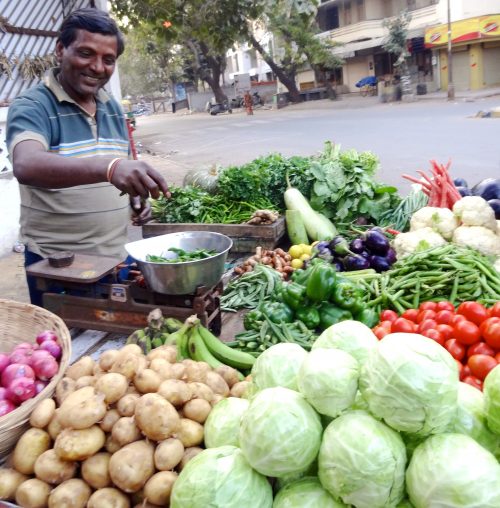
Let us first understand the fake foods, or “food-like substances. They are not ‘real foods’ that Mother Nature meant for us to eat—they are the factory-processed stuff with chemicals, heated up to high temperatures during processing which kills all useful enzymes in them, and packaged with more preservative chemicals to have a long shelf-life in supermarkets. The best real foods are organic too, not doused in pesticides or grown with artificial fertilizers.
But why should we eat fresh foods, and what are fresh foods? There are two kinds of real and fresh foods – freshly cooked, and raw fresh foods. The freshest foods we can eat are raw foods, and what we can eat raw are fruits and vegetables and nuts and seeds. The first reason to eat raw fresh foods is that they are delicious! They have so many enzymes and micro-nutrients that those who eat a good amount of raw foods rarely fall ill and live to a ripe old age.
Research findings make it clear that there are several benefits to eating fresh vegetables and fruits. Our body’s health depends on the health of our cells – which makes our tissues and organs healthy – and cell health depends on a slightly alkaline environment, which can be fostered best by about 60 % alkalizing foods and 40 % acidifying foods. The alkalizing foods are the fresh ones—fruits and vegetables.
All other “real” foods like grains, pulses, milk, fresh eggs, and meat leave acid residues in the body.
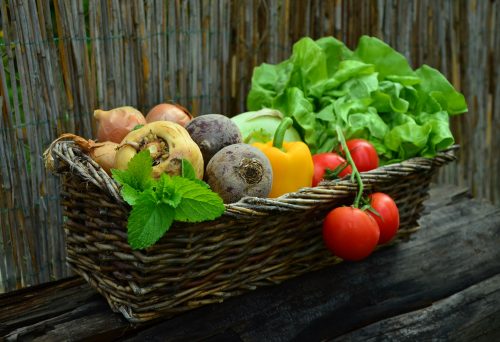
Fresh plant-based foods have high water content, and they have more fibre, apart from all the other goodness they contain. Most of the diseases that have become common today – from heart disease and diabetes to neurological diseases and cancer – can be treated better if our diets include fresh vegetables and fruits. Hence, they should not fill more than half our plates.
As for fresh cooked foods, home cooking will help us avoid the chemicals. But let us remember that cooking in temperatures above 116°C destroys enzymes, the living catalysts our bodies need, and hence we can steam some of our foods apart from eating raw salads and fruits.
Fresh eggs and meat should come from farms or range-fed animals, and not from factory farms which pump them with antibiotics and artificial foods. If the whole world were to avoid factory-farmed meats, the amount of meat we consume would automatically come down, and we would be a less sick world of human beings.
Over 35 % of carbon emissions come from food processed and packaged with chemicals in factories, grown through fossil-fuel and land- and water-intensive agriculture, and often transported long distances to supermarkets.
We need to add here that ⅔rd of the crops grown are for livestock.
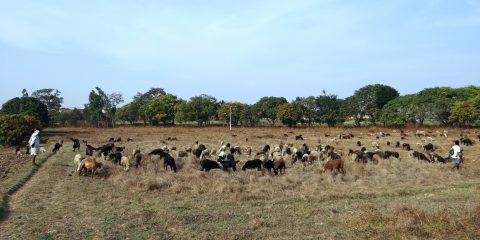
We are living in a world dominated by giant food corporates which control a large part of the food economy. They stand to profit most in a globalised world where increasingly people get dependent on addictive foods that are cheap and convenient. (Refer to Food Politics by Marion Nestle, and Fast Food Nation by Eric Schlosser). In this globalised food system, business as usual means transporting wheat to India from the US or Australia, sending rice, fruits, and vegetables from India to Europe, and generally getting food to travel by air, sea, rail, and road all the time.
The food industry has focused on quantity for its profits, not quality. Hence, industrial agriculture gobbles up 70 % of the planet’s freshwater resources and relies on petroleum-based fertilisers and massive amounts of pesticides. According to the National Academy of Sciences in the US, more than 80 % of the most commonly used pesticides are potentially carcinogenic.
But then the question often asked is, “Can organic foods feed the world?” Modern organic practices denote more than just an absence of synthetic chemicals, or going back to “primitive” farming.
It is knowledge-intensive farming which uses a sophisticated understanding of biological systems to build soil fertility and manage pests and weeds by applying ecological principles.
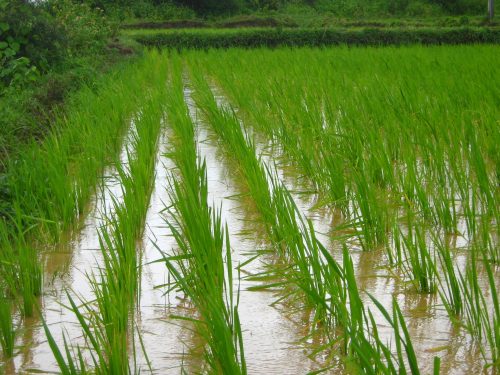
In one of the largest studies to analyze how agro-ecological practices affect productivity in the developing world, researchers at the University of Essex in England analyzed 286 projects in 57 countries. Among the 12.6 million farmers followed, who were transitioning toward sustainable agriculture, researchers found an average yield increase of 79% across a wide variety of crop types.
A 2008 U.N. Conference on Trade and Development report concluded that “organic agriculture can be more conducive to food security in Africa than most conventional production systems, and…is more likely to be sustainable in the long term.”
The evidence of the importance of local and organic foods has become incontrovertible. Yet vested interests in the corporate world will not change easily.
A bottom-up movement is essential therefore to apply pressure on the powers-that-be at least over a period of a few decades.
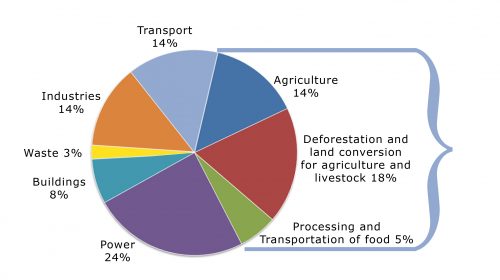
People around the world are waking up to the reality that food which is nutritious for us is also good for the planet, or rather, helps sustain our life on Earth. But we are yet in the early stages of a movement for healthful foods and sustainable agriculture, and we need to keep learning how to do our best for ourselves and our eco-system. In this complex and confusing scenario, the following steps can help us get started.
The first step is to commit to and choose what is local for you — food that is grown within a 50 km., or say 200 km. or 500 km. radius, or a region that is called one’s “foodshed”. This may not be possible to adhere to, given that we do not know where most food comes from, but it serves as a parameter to keep in mind.
Next, you need to locate shops that sell organic foods, or keep asking neighbourhood shops if they have organic groceries and vegetables. Over a period of time, the demand will create its supply. Most organic farmers and suppliers are small, and a Google search will yield some good sources of organic food.
Be prepared to pay more for your organic foods—if you don’t, you may anyway end up paying more medical bills. (The US eats 93 % processed foods, and 42 % citizens have cancers, and 33 % diabetes and heart disease. Also, over 65 % are overweight.)
You can also track down organic farmers’ markets in your region. On city outskirts, you may also find village “santhes”, where a few farmers may sell uncertified organic vegetables and fruits. They can often be identified by their smaller size and more irregular shape.
Identify the seasonal and indigenous foods that can grow without pesticides anyway. These can include millets, papayas, guavas, and chikoos, and all kinds of gourds in many regions. Rule out the non-seasonal foods (like watermelon in winter) and “foreign” stuff like Washington or Australian apples.
You can of course get your best local food if you grow some yourself, especially the greens and herbs. When it comes to anything processed, it is best to go extremely local — cooked at home! Anything processed in factories has often collected lots of “food miles”. It contains chemicals, fats, and excess salt or sugar, all of which can cause several lifestyle diseases over the years.
Local foods support the local economy. CSAs – community-supported agriculture – are fueling a slow movement towards city-dwellers connecting with farmers for mutual benefits.
Urbanites get organic, sustainable, and local foods, while farmers get better price and satisfaction.
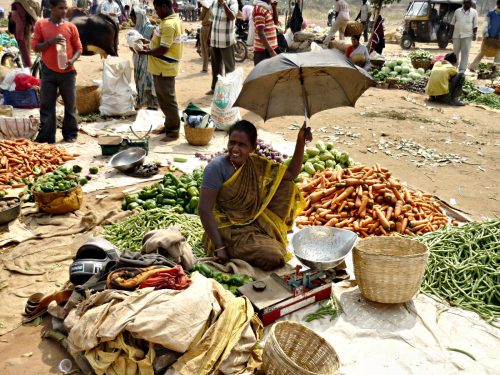
Involve your family. Note that this is the last point, but possibly the most important one. Several documentaries and clips that you can get on YouTube and other sources can help you more than personal lectures!
First published by The Better India